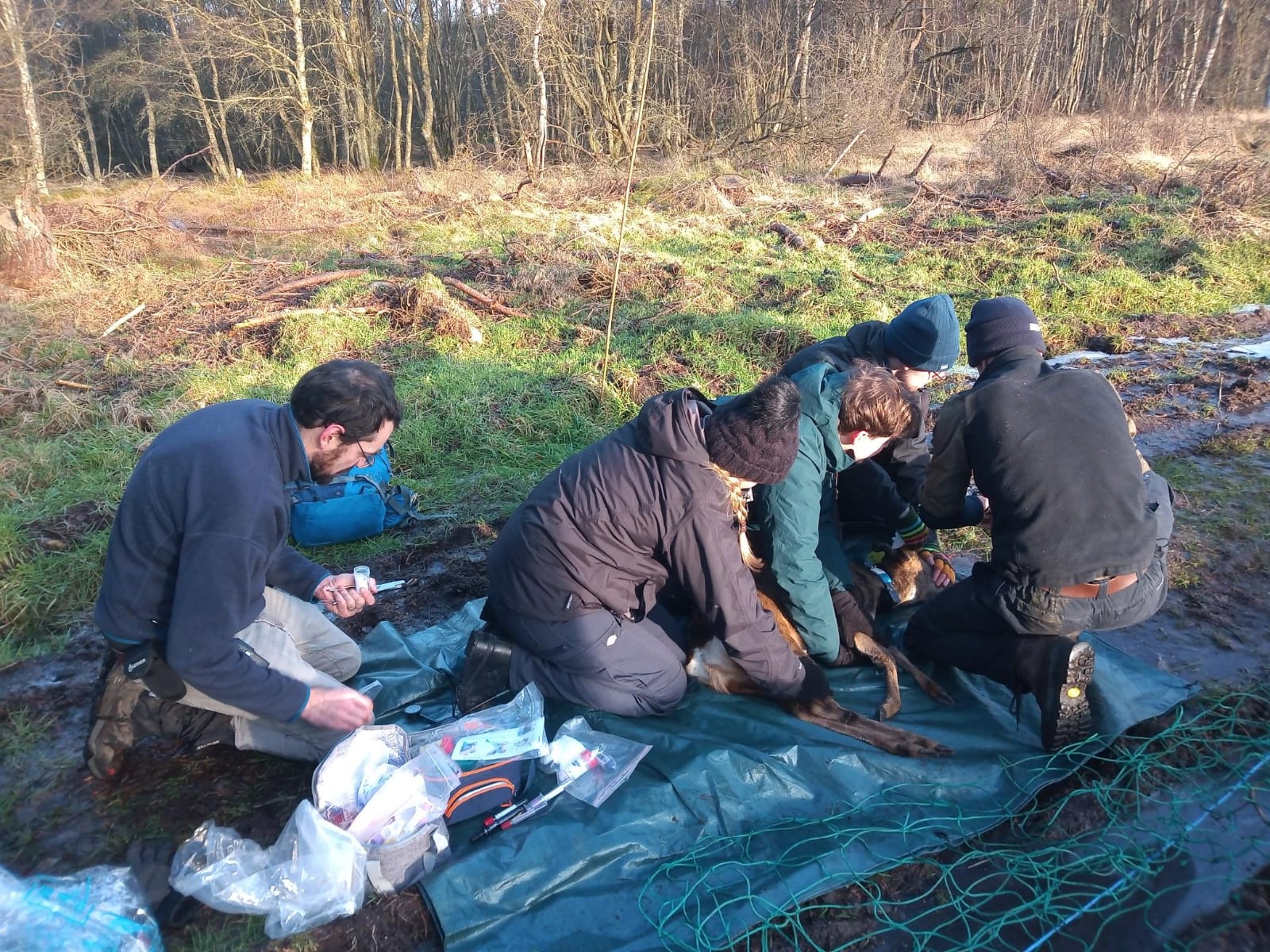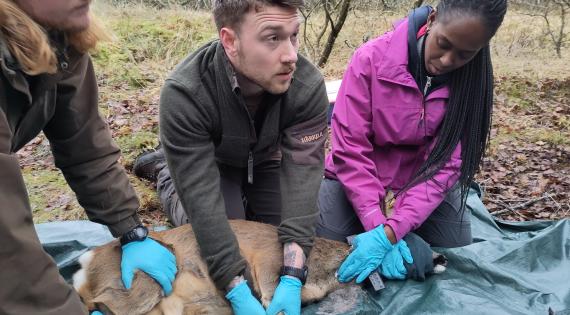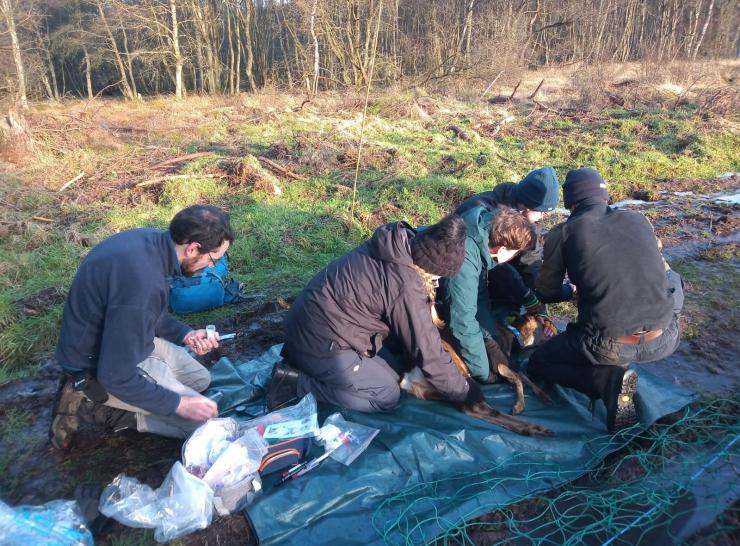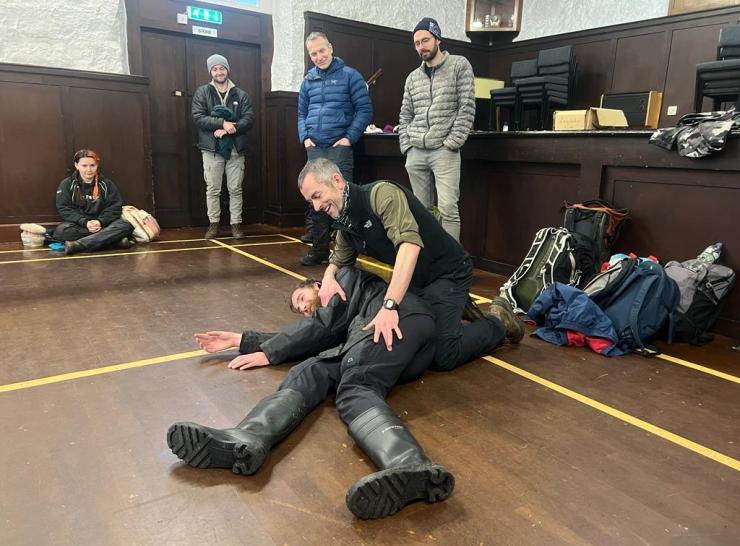Roads, rivers, fences and the spatial configuration of habitat are key determinants of how animals percieve and move within their landscape.
In Work Package 1 of TickSolve, we aim to determine the impact that landscape structure has on the host density, habitat selection and behaviour of key tick hosts, such as deer. We hypothesize that tick densities and the transmission of Lyme Disease pathogens (Bbsl) are dependent on how landscape barriers affect the movement of these hosts.
Our project adds to existing knowledge about deer distributions by collecting individual-level data on movements of the primary tick reproductive host: deer. By deploying satellite GPS collars, we are quantifying how habitat selection by deer varies across landscape structure and deer densities. We expect that deer movement within and between habitats impacts the distribution of tick-borne pathogens and the hazard to humans. We are also examining how deer behave at fine scales across habitats in ways that may affect ticks.



